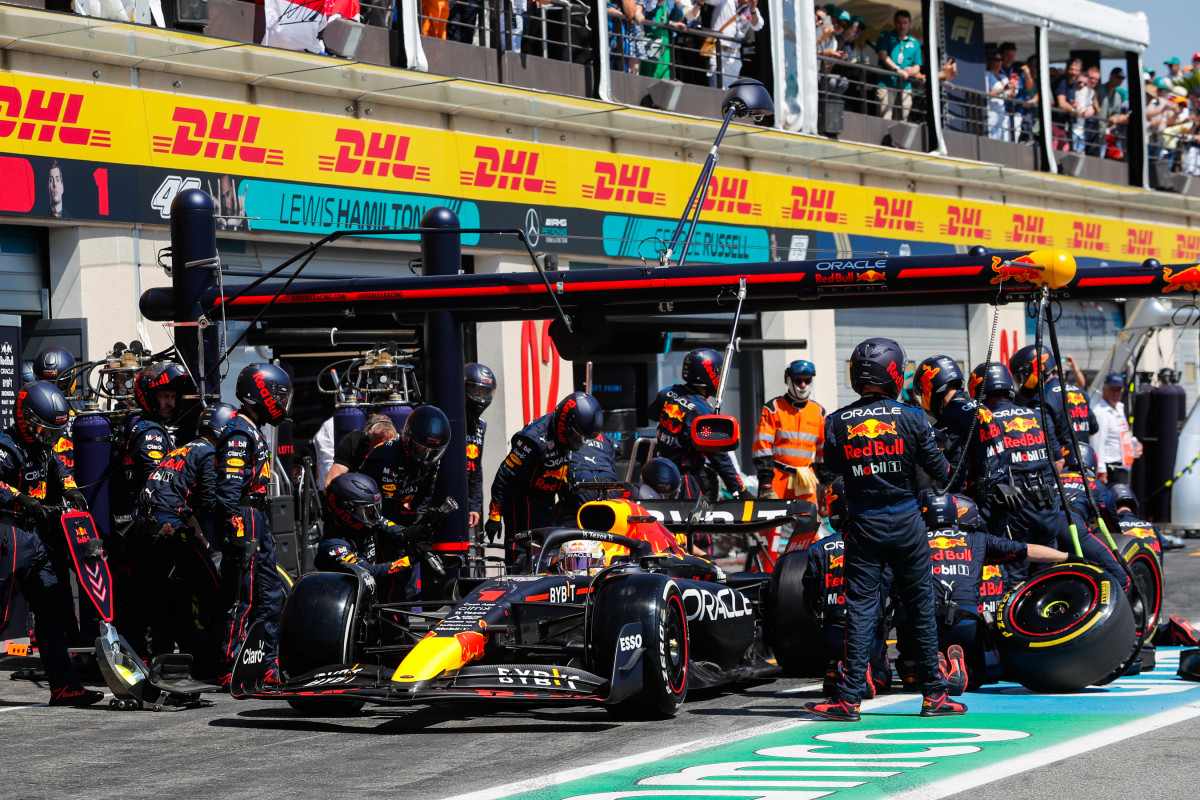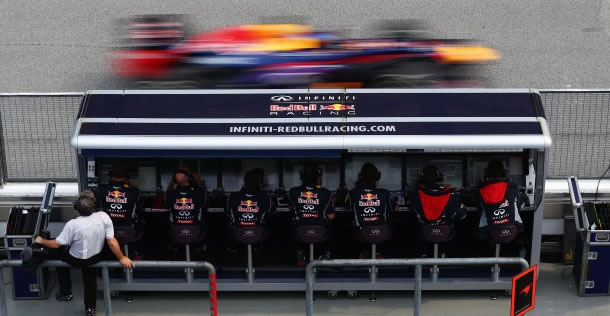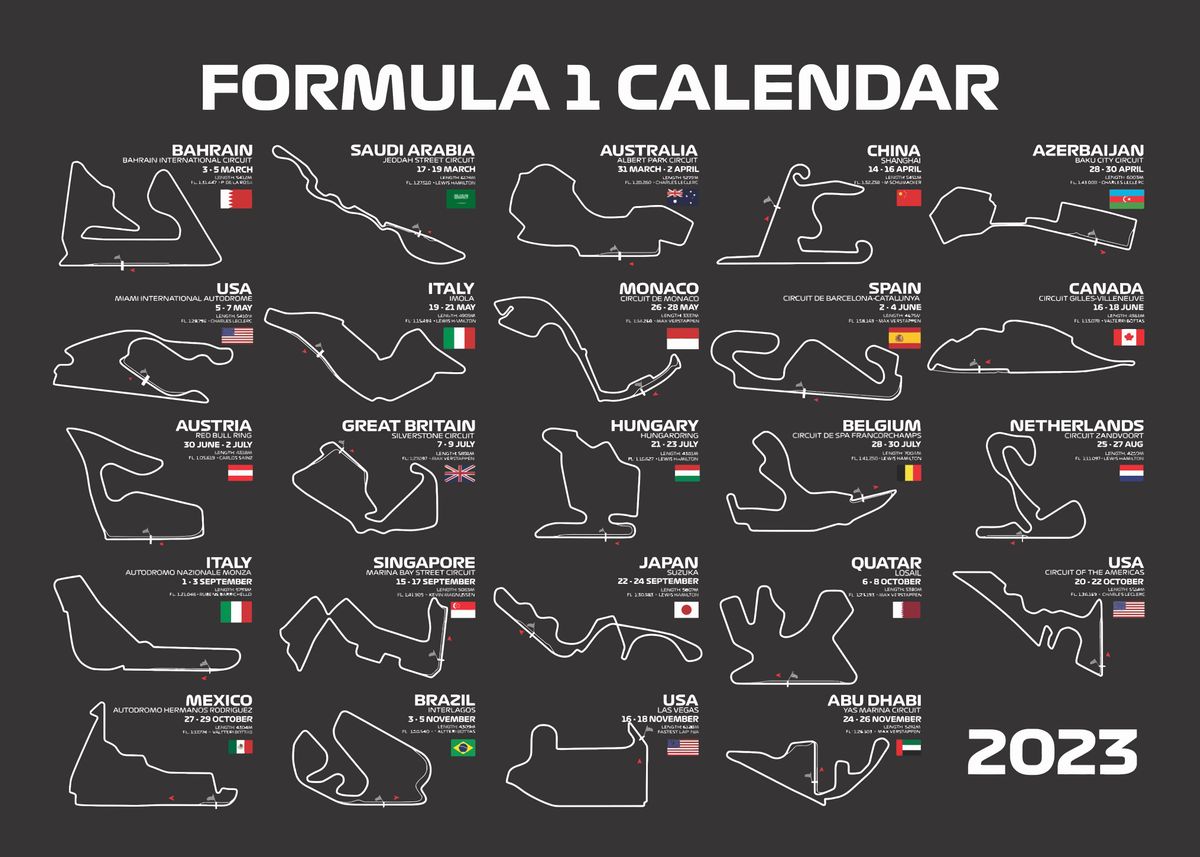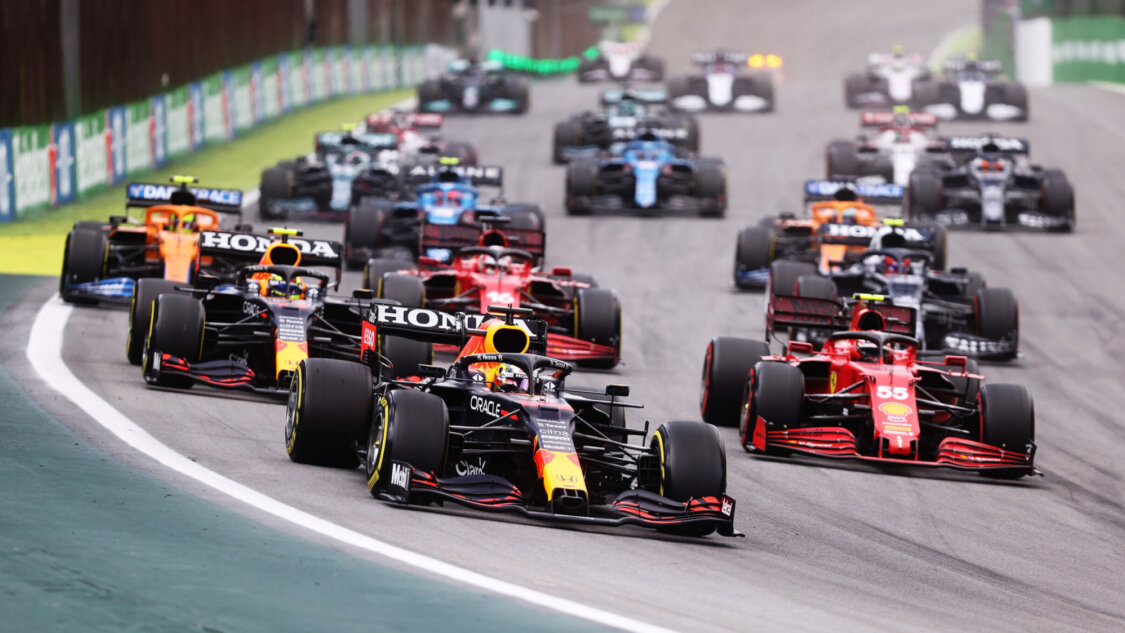
Part 2 – Looking at the Rules and Basics of F1
Formula 1 (F1) racing is a highly competitive and exhilarating motorsport that captivates millions of fans worldwide. As you prepare to become a die-hard fan before the upcoming Las Vegas Grand Prix on November 18th, let’s delve into the exciting world of Formula 1, exploring every detail you need to know.
The Basics of Formula 1:
Formula 1 is widely regarded as the pinnacle of motorsport. It involves teams racing purpose-built cars on a variety of circuits around the globe. These circuits can range from street circuits, like the one expected in Las Vegas, to purpose-built race tracks or a combination of both. To see a full list of F1 circuits, you can go here.

F1 Teams and Drivers:
Formula 1 teams consist of two drivers who compete against each other and other teams throughout the season. Each team designs and constructs its own car, adhering to strict technical regulations set by the FIA (Fédération Internationale de l’Automobile). These regulations ensure fair competition and safety. Some of the top teams in Formula 1 include Mercedes, Red Bull Racing, Ferrari, and McLaren.
Race Weekends:
A typical Formula 1 race weekend spans three days, from Friday to Sunday. Let’s take a closer look at each day:
- Friday (Practice Sessions): On Friday, teams have two practice sessions to fine-tune their cars and gather valuable data about the track. These sessions help drivers familiarize themselves with the circuit, optimize their setups, and evaluate tire performance. The first practice session is typically held in the morning, followed by a second session in the afternoon.
- Saturday (Qualifying): Saturday is dedicated to the qualifying session, which determines the starting order for Sunday’s race. Qualifying consists of three parts: Q1, Q2, and Q3. In each part, drivers have a limited time to set their fastest lap. The slowest drivers are eliminated after each part until only ten drivers remain for the final shootout in Q3. The order in which the drivers set their fastest laps determines their starting positions on the grid.
- Sunday (Race Day): The main event takes place on Sunday – the Grand Prix race. Drivers line up on the grid based on their qualifying positions. The race distance is typically around 190-310 miles (305-500 kilometers), depending on the circuit. This translates to 44-78 laps. The winner is the driver who completes the set number of laps or reaches the checkered flag first.

Formula 1 Race Format:
During the race, drivers compete to achieve the highest average speed over the set distance. However, various elements add excitement and strategy to the competition:
- Pit Stops: Formula 1 races feature pit stops, where drivers come into the pits to change tires, refuel (if allowed), and make adjustments to the car. Pit stops are crucial for maintaining optimal performance and strategy during the race. Teams aim to minimize the time spent in the pits to avoid losing positions. Pit stops are often a highlight of the race, as teams must coordinate tire changes, fueling (if applicable), and any necessary repairs or adjustments. The average pit stop time is 2.5 seconds. Don’t blink or you’ll miss it.
- Tire Management: Formula 1 races require multiple tire changes due to the wear and degradation they experience. The sport employs different tire compounds, each with varying levels of grip and durability. Tire management is critical, as drivers must find the right balance between speed and preserving tire life. Teams carefully strategize when to pit for fresh tires to gain an advantage over their competitors. Tire choices and strategies can vary depending on track conditions, weather, and individual driver preferences. There are fire types of tires: soft, medium, intermediate, hard, and wet.
- Safety Car: In the event of an accident, unsafe track conditions, or the need to clear debris, the safety car is deployed. When the safety car is out, all cars must reduce their speed and maintain a specified gap. This neutralizes the race, giving officials the opportunity to address any hazards. The safety car is typically a high-performance road car, and its presence often leads to strategic decisions by teams and drivers. For example, some teams may take advantage of the safety car period to make pit stops without losing as much time.

F1 Championships and Points:
Formula 1 has two primary championships:
- Drivers’ Championship: This championship recognizes the individual driver who accumulates the most points throughout the season. Points are awarded based on the finishing position in each race. The driver with the highest number of points at the end of the season is crowned the World Champion. The scoring system for the Drivers’ Championship allocates points to the top ten finishers, with the winner receiving the most points and subsequent positions receiving fewer points.
- Constructors’ Championship: The Constructors’ Championship is awarded to the team that earns the most points based on their drivers’ performances. Points go to both drivers of a team, and the team with the highest total wins the championship. Like the Drivers’ Championship, the Constructors’ Championship assigns points to the top ten finishers, with the winning team receiving the most points.
The scoring system for both championships has undergone changes over the years. In recent seasons, the scoring system has awarded points as follows: 1st place – 25 points, 2nd place – 18 points, 3rd place – 15 points, 4th place – 12 points, 5th place – 10 points, 6th place – 8 points, 7th place – 6 points, 8th place – 4 points, 9th place – 2 points, and 10th place – 1 point.

The Role of Strategy in Formula 1:
Strategy plays a significant role in Formula 1 racing. Teams and drivers carefully analyze various factors to optimize their performance and maximize their chances of victory. Some key strategic considerations include:
- Tire Strategy: As mentioned earlier, tire management and strategy are crucial. Teams must decide which tire compounds to use during the race, when to make pit stops for fresh tires, and how to manage tire wear and degradation. Factors such as track conditions, weather, tire performance, and the driver’s position in the race influence these decisions. Some drivers may prefer aggressive strategies, making more pit stops for fresh tires, while others may opt for a conservative approach to maintain track position.
- Pit Stop Timing: Pit stops are not only about changing tires but also present an opportunity to gain an advantage over competitors. Teams strategize the timing of pit stops to ensure they gain track position or take advantage of safety car periods or virtual safety car (VSC) periods. Teams must assess the potential gains from an early pit stop against the risk of traffic or adverse track conditions.
- Overtaking and Defensive Tactics: Overtaking is a thrilling aspect of Formula 1 racing. Drivers employ various techniques to overtake their rivals, such as slipstreaming (utilizing the reduced air resistance behind another car to gain speed) and making use of DRS (Drag Reduction System) zones. DRS allows a chasing driver to reduce drag by opening a rear wing flap, providing a temporary speed boost. On the other hand, drivers also employ defensive tactics to maintain their position, such as positioning their car strategically and blocking overtaking opportunities.

Beyond the Track:
In addition to these strategic elements, Formula 1 teams invest heavily in research and development, aerodynamics, engine performance, and technological advancements to gain a competitive edge. The sport operates at the forefront of automotive engineering and pushes the boundaries of what is possible in terms of speed, efficiency, and safety.
Formula 1 is not just about the on-track action. It is a global spectacle with a rich history, passionate fans, and a vibrant paddock environment. The sport embraces glamour, showcasing the lifestyles of drivers, team personnel, and celebrities. In addition to the on-track battles, fans can immerse themselves in the drama of rivalries, team dynamics, and the personalities of drivers and team principals.
Television broadcasts bring the excitement of Formula 1 to millions of viewers worldwide. The coverage includes in-depth analysis, driver interviews, team radio transmissions, and onboard camera footage, providing fans with a comprehensive viewing experience.
Wrapping Up Part 2:
Formula 1 racing is an electrifying motorsport that combines speed, skill, strategy, and technological innovation. As you prepare to become a die-hard fan before the Las Vegas Grand Prix on November 18th, you now have a comprehensive understanding of the sport’s basics, race formats, strategic considerations, and the significance of championships and points. So sit back, fasten your seatbelt, and get ready for an adrenaline-filled journey into the world of Formula 1!
Stay tuned for the final part of this three-part series! Check out Back Sports Page for more Formula 1 content including part 1 of this three part series!














